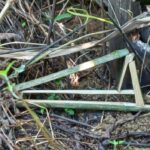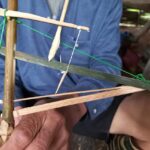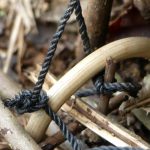In earlier times, the Ju//hoansi Khoi-san (Bushmen) of North-East Namibia employed four distinct traditional techniques for hunting animals. These techniques have remained unchanged, as even today (in 2023), the Ju//hoansi continue to eschew the use of firearms, sticking to their traditional methods instead.

However, the government regulations concerning hunting have undergone significant changes over time. Today, all Namibian citizens require a hunting permit, and obtaining this permit necessitates possessing a passport. Unfortunately, for the Ju//hoansi, the journey to the nearest passport office is no mean feat and can be extremely expensive. As a result, legal hunting is becoming increasingly difficult for the Ju//hoansi Khoi-san bushmen in Namibia.
The following paragraphs briefly describe the four traditional Khoi-san hunting techniques: tracking and stalking, hunting with dogs, digging out burrowing animals, and snaring.
Tracking and Stalking of Plains Game
During tracking and stalking hunts, small hunting parties or individual hunters search for fresh tracks left behind by plains game. The preferred species are eland, giraffe, kudu, gemsbok, and wildebeest. Once the tracks are spotted, the hunters must determine their age and other variables to decide whether or not it is worth pursuing the trail. Ideally, the hunters look for an older or infirm animal moving slowly through dense bush. They do not speak to each other during the hunt for fear of alerting the animals to their presence. All communication within the group is done using hand signals.
The hunter tiptoes closer, getting within the shooting range of his bow and arrows without the quarry’s knowledge. The final stalk may take up to 40 minutes, with the hunter creeping on their elbows and knees. To have a reasonable chance of hitting the target with an arrow, the hunter must be within a range of 30 m/100 feet.
After the shot
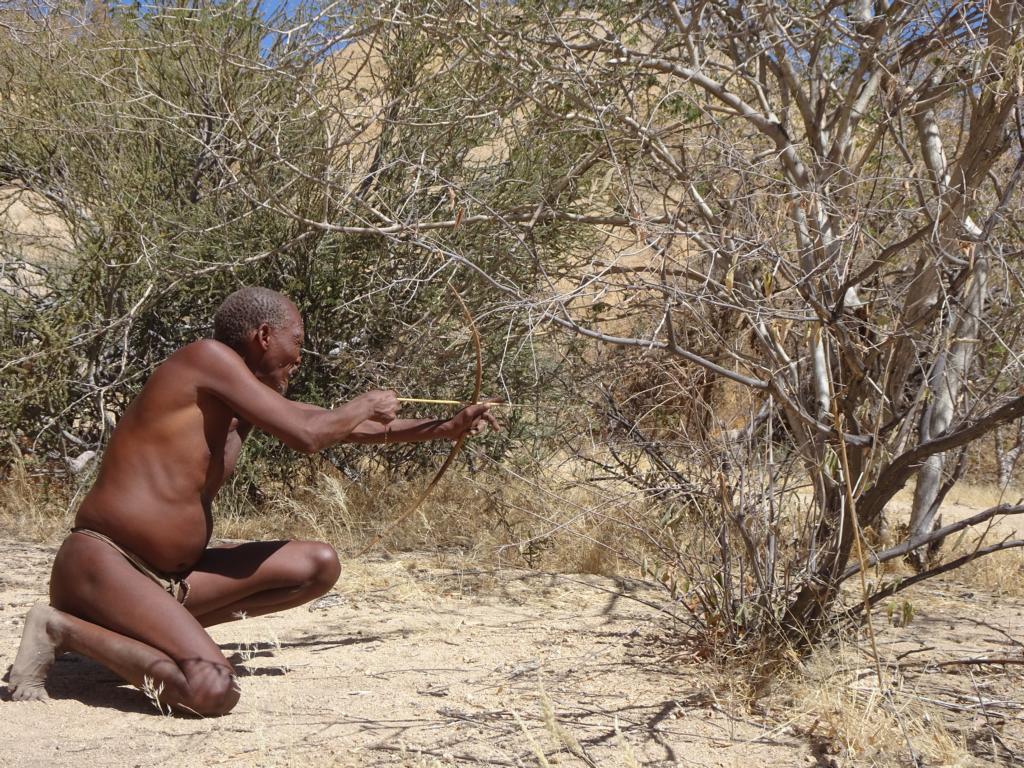
Once the animal is hit, the poison on the arrow must do its work. A poisoned arrow can kill a large antelope within 6 to 24 hours if well placed. After examining the tracks for signs of blood, the hunter surprisingly heads back home. There is no point chasing an animal to its death place, which could be miles away. Instead, the hunter returns to camp for the night. The next day, accompanied by a party of carriers, the hunter sets out to pick up the wounded animal’s trail. They follow the prey to its place of dying, butcher the carcass, and bring it home.
Tracking and stalking are the most well-known forms of hunting associated with the Ju//hoansi Khoi-san and other hunting peoples. However, it may surprise many that the different hunting techniques produce more kills than the classic tracking and stalking hunt. On average, experienced hunters bag only three large antelopes per year using this method.
Additional catches when tracking and stalking
Side-catches of tracking and stalking hunts often include large tortoises, particularly leopard tortoises (Stigmochelys pardalis), which can reach up to 40 cm (16 in) in length and weigh up to 13 kg (29 lb). Other reptiles, such as large snakes or rock monitors, can be caught and consumed.
If the hunters come across an ostrich nest, they drive the adult bird away and collect the eggs and chicks. For such chicks, life is precarious, as they are valued by bushmen more as a food source than as pets.
Hunting with dogs
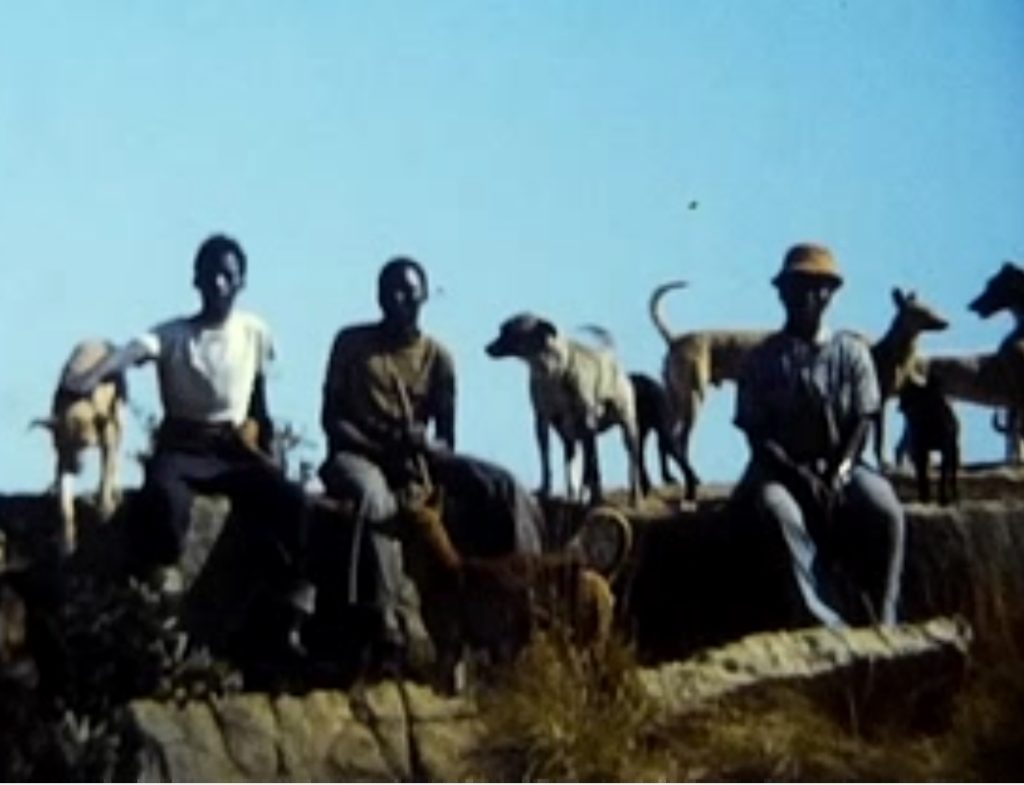
Hunting with dogs is a common practice for the Ju/:hoansi people and is considered the second type of hunt. This method is used to capture small game such as warthogs, steenbuck, common duiker, and scrub hares. Well-trained hunting dogs track and corner the prey, and the hunter then kills it with a spear. Using this method, a skilled hunter with two well-trained dogs can harvest up to three warthogs a month.
Digging out burrowing animals
The Ju//hoansi people engage in significant underground hunting, where they chase burrowing animals into their dens. This hunting method mainly captures springhares, warthogs, pythons, and porcupines. However, the latter three animals are also hunted above ground.
Catching Springhares
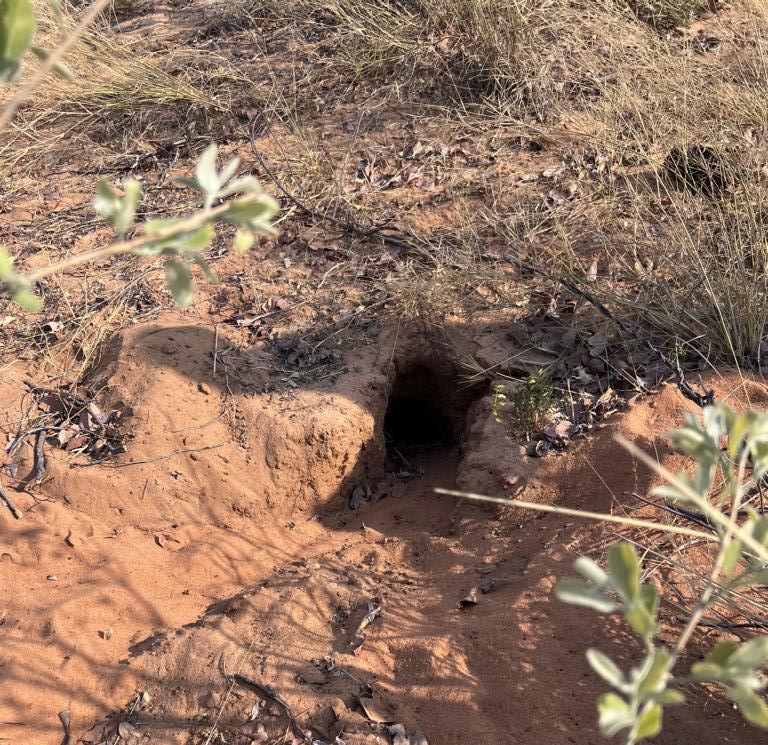
The springhare is a nocturnal animal that sleeps in narrow burrows during the day. Ju//hoansi hunters have devised a unique tool: a 4-meter (13-foot) long pole with a hook at the end, which is used to probe the springhare’s burrows. The hook is spun around and used to grab the animal by its fur while it’s still underground. After that, a digging stick excavates the burrow and retrieves the animal.
.
.
Removing Hornbills from their nest
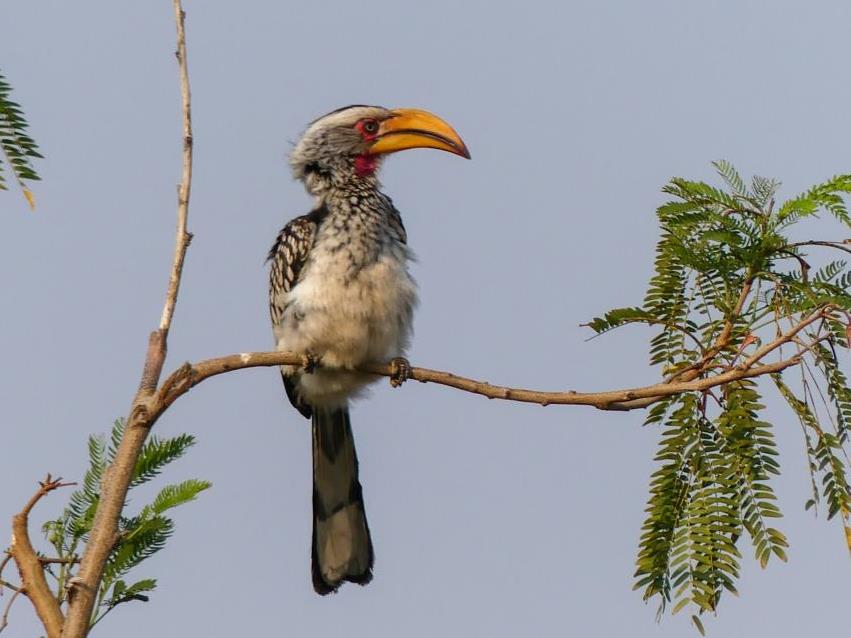
A similar method of hunting burrowing animals is employed to catch Hornbills from their nests. Targeted Hornbills are usually ‘Southern yellow-billed hornbills’ or ‘Red-billed hornbills’, as other species of hornbills are rare and endangered. The male and female hornbills construct their nest in the hollow of a big tree trunk. The male seals the entrance with clay to limit access to the enclosed female, who only uses the entrance to excrete waste.
When Khoi-san hunters locate such a nest, they carefully check if the excrement at the foot of the tree is still moist. This ensures that the hole is occupied by the female bird and her young, not by a snake. To catch the hatching bird, the hunter will stick his finger into the small opening, after which the bird reacts instinctively by biting. He then grasps the hornbill’s beak and keeps it firmly closed while enlarging the hole opening with his other hand. He will then pull out the mother bird. Eggs (usually four or five) or nestlings are taken home and eaten. Sometimes, the female hornbill tries to hide in a small chimney above the nest, but the hunters are familiar with this tactic and retrieve her from that location.
Snaring
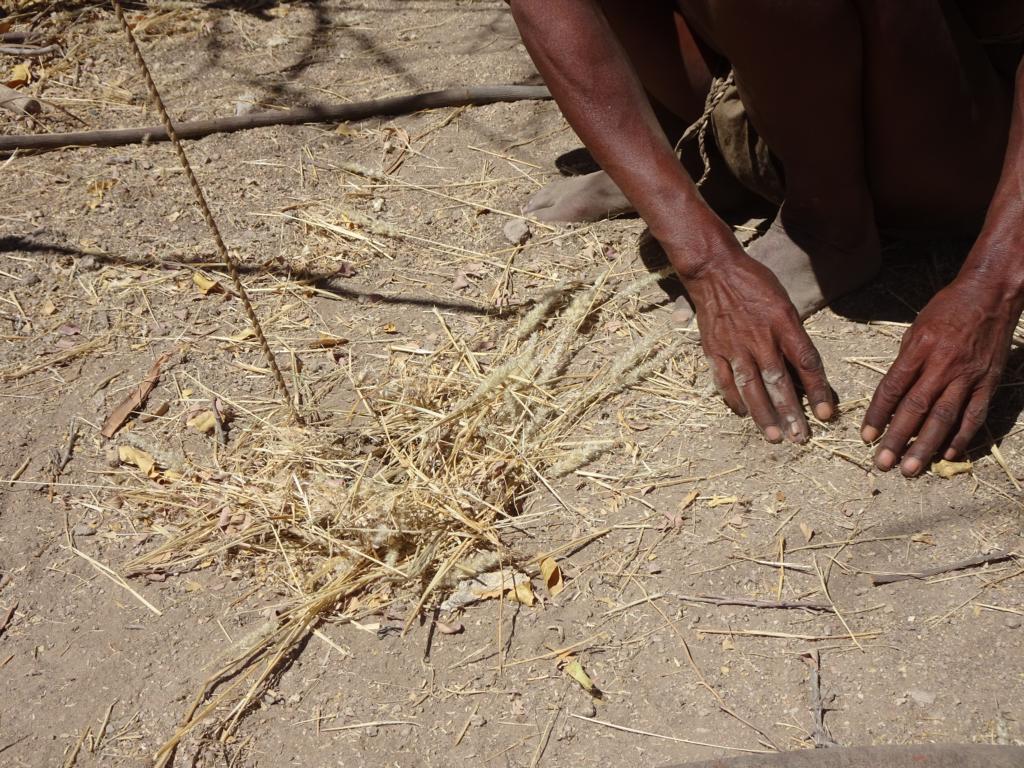
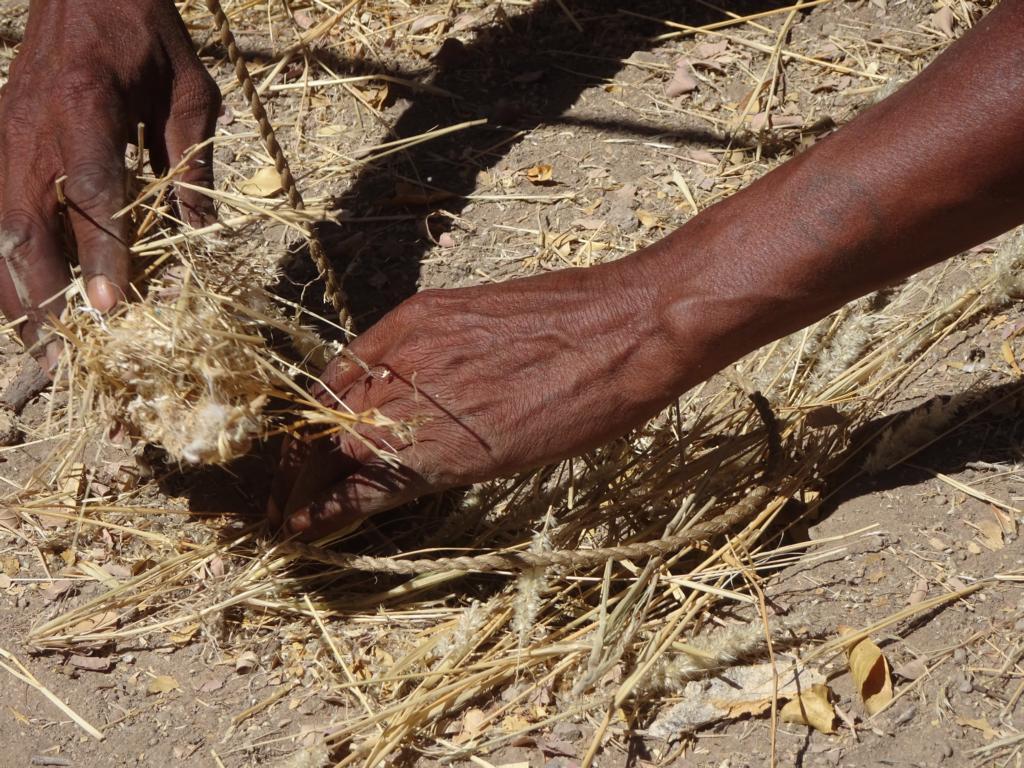
The fourth technique used by the Ju hunters is snaring. This is mainly employed by older hunters with limited mobility. A hunter first surveys an area of bush for fresh tracks and then creates a discreet line of brush to train the animals to cross at specific gaps. The snares are made of rope from local fiber plants, mainly Sanseviera sp., and consist of a delicate wooden trigger attached to a bent-over sapling. When a Scrub hare, Guineafowl, or small antelope such as Dik-Dik, Steenbuck, Grysbok, or Duiker steps into the snare, the noose tightens, and the sapling springs up, leaving the animal dangling.
However, snaring does not yield a large quantity of meat. Lee’s description in this article notes that in July 1964, at a camp in North-Western Botswana, 18 animals were killed, 11 of which were caught in snares. However, these 11 animals only provided 20% of the camp’s meat.
Lessons learned about bushmen hunting techniques:
- Bushmen in the northern border areas of Botswana and Namibia use four main hunting techniques.
- The iconic hunting techniques are tracking and stalking, but these techniques only provide a small portion of the total number of kills compared to other techniques.
- Hunting with dogs is widely used but not well-known to outsiders.
- Unearthing animals from their burrows is used to catch springhares, warthogs, porcupines, pythons, hornbills, and others.
- Snaring is mainly done for ground birds and small antelopes by elderly bushmen.
.



